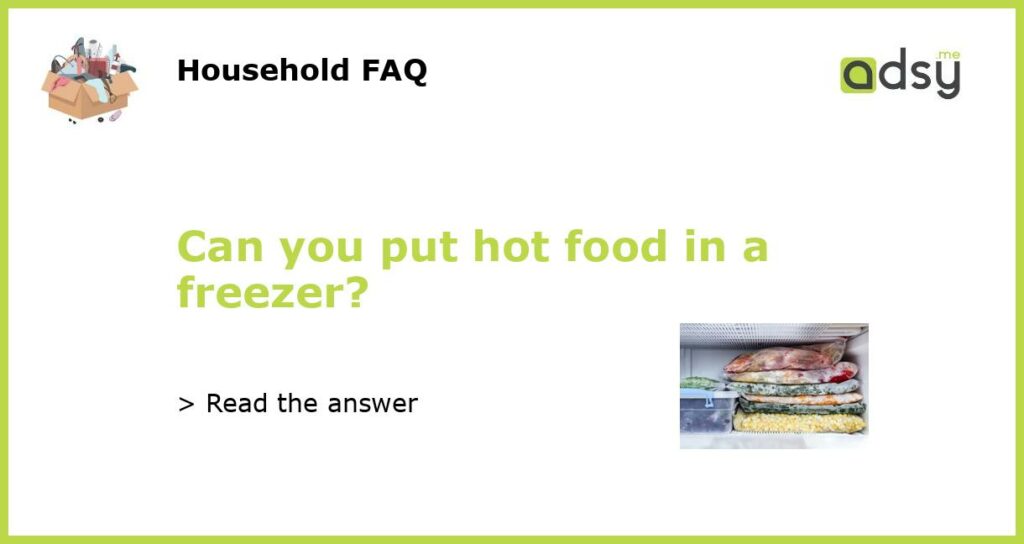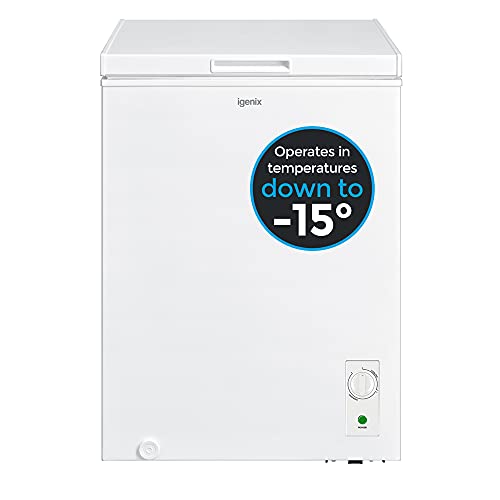Yes, you can put hot food in a freezer, but it is not recommended
Putting hot food in a freezer can cause a number of issues, including the risk of foodborne illnesses and damage to your freezer. However, there are certain precautions you can take to safely freeze hot food if necessary. In this article, we will explore the reasons why it is not recommended to put hot food in a freezer and provide some guidelines for freezing hot food.
Why is it not recommended to put hot food in a freezer?
When you put hot food directly into the freezer, it can cause the temperature inside the freezer to rise. This can lead to a number of problems, including the potential for bacterial growth and increased energy consumption. Freezers are designed to maintain a consistent temperature, and introducing hot food can disrupt this balance and affect the overall efficiency of the appliance.
The risk of foodborne illnesses
One of the main concerns when it comes to freezing hot food is the risk of foodborne illnesses. When you cool down hot food, there is a period of time when it will be within the danger zone (40°F-140°F) – the temperature range in which bacteria can grow rapidly. By placing hot food in the freezer, you are extending the time it takes for the food to cool down, potentially creating an environment that allows bacteria to multiply.
Potential damage to your freezer
Another reason why it is not recommended to put hot food in a freezer is the potential risk of damage to the appliance itself. Freezers are not designed to handle large fluctuations in temperature, and placing hot food inside can cause condensation to form, leading to frost buildup and ice crystals. This can reduce the lifespan of your freezer and affect its overall performance.
How to safely freeze hot food
While it is generally discouraged, there are some guidelines you can follow to safely freeze hot food if necessary:
- Cool the hot food before placing it in the freezer. You can do this by placing the food in a shallow, wide container and stirring it occasionally to help it cool faster.
- Divide the hot food into smaller portions. By dividing it into smaller portions, you will ensure that the food cools down more quickly and evenly.
- Allow the food to cool down to room temperature before transferring it to the freezer. This can help prevent temperature fluctuations and minimize the risk of bacterial growth.
- Label and date the containers before placing them in the freezer. This will help you keep track of how long the food has been frozen and ensure you use it within a safe timeframe.
- Leave some space between the containers to allow for proper air circulation. This will help to maintain a consistent temperature inside the freezer and prevent unnecessary strain on the appliance.
Best practices for freezing food
While we have discussed the specific issue of freezing hot food, it is also important to keep in mind some general best practices for freezing food:
- Freeze food as soon as possible to maintain its quality and reduce the risk of spoilage.
- Wrap the food properly to prevent freezer burn. This can be done by using airtight containers, freezer bags, or wrapping the food tightly in plastic wrap or aluminum foil.
- Store frozen food at a consistent temperature of 0°F (-18°C) or below. It is important to regularly check the temperature of your freezer to ensure it is maintaining the ideal conditions.
- Use frozen food within a safe time frame. While frozen food technically stays safe indefinitely, it can lose quality over time. Refer to storage guidelines for specific foods to determine how long they can be safely stored in the freezer.
- Thaw frozen food properly before consuming. The safest way to thaw frozen food is by placing it in the refrigerator overnight. Alternatively, you can use the defrost function on your microwave or submerge the food in cold water.






